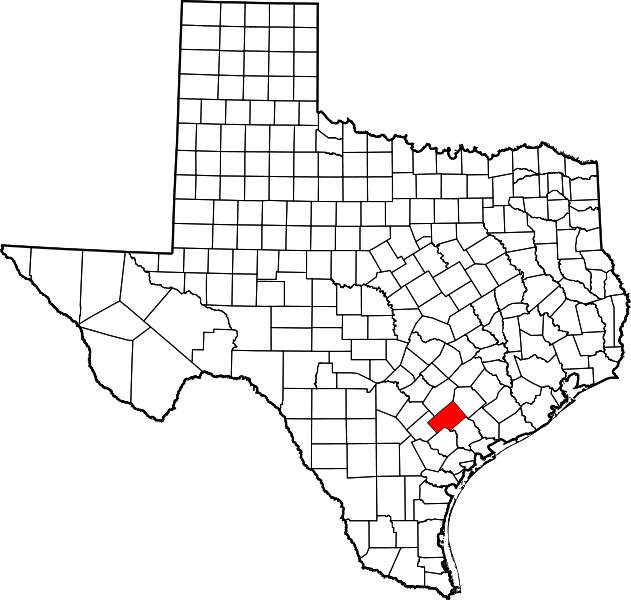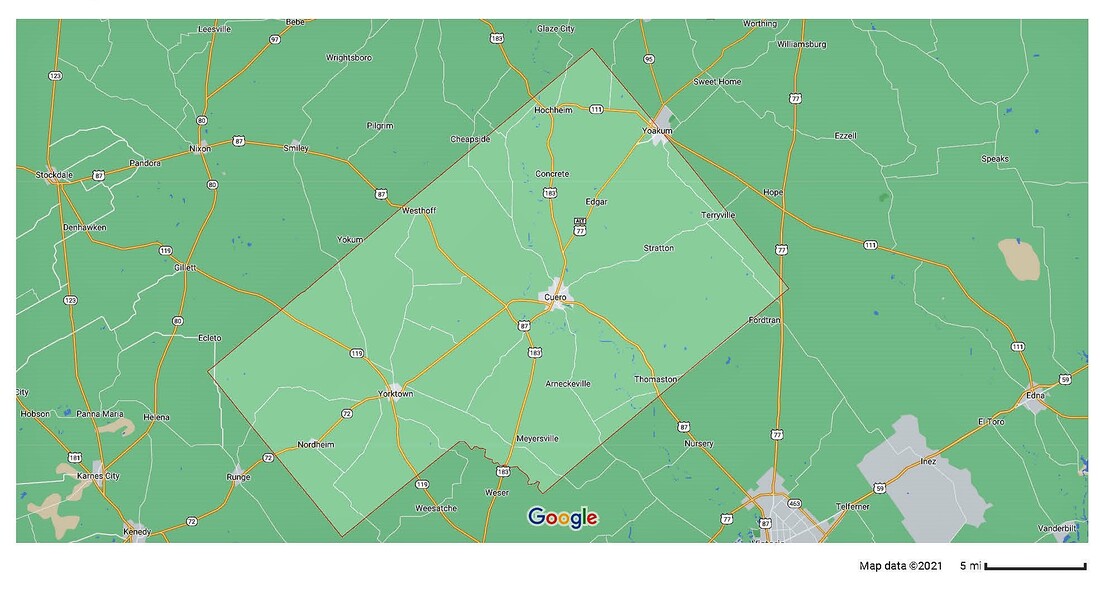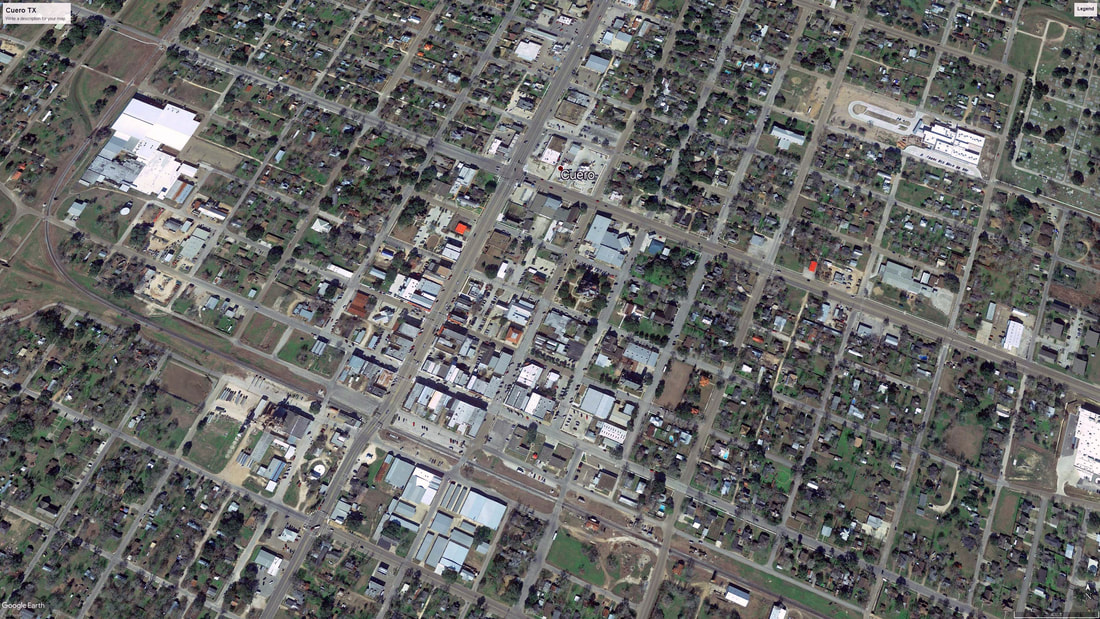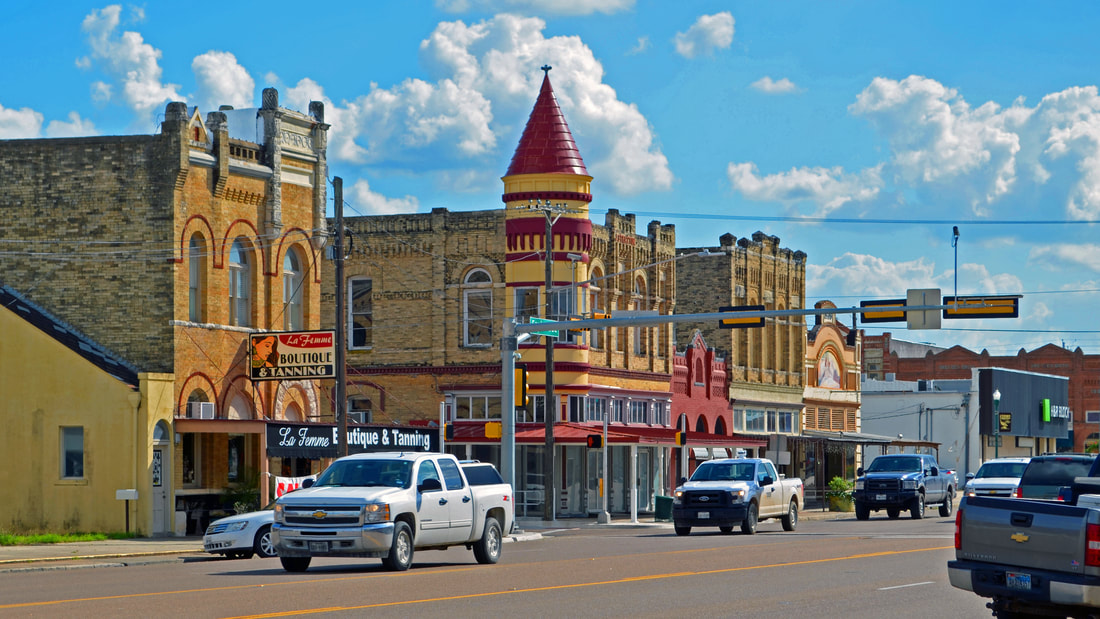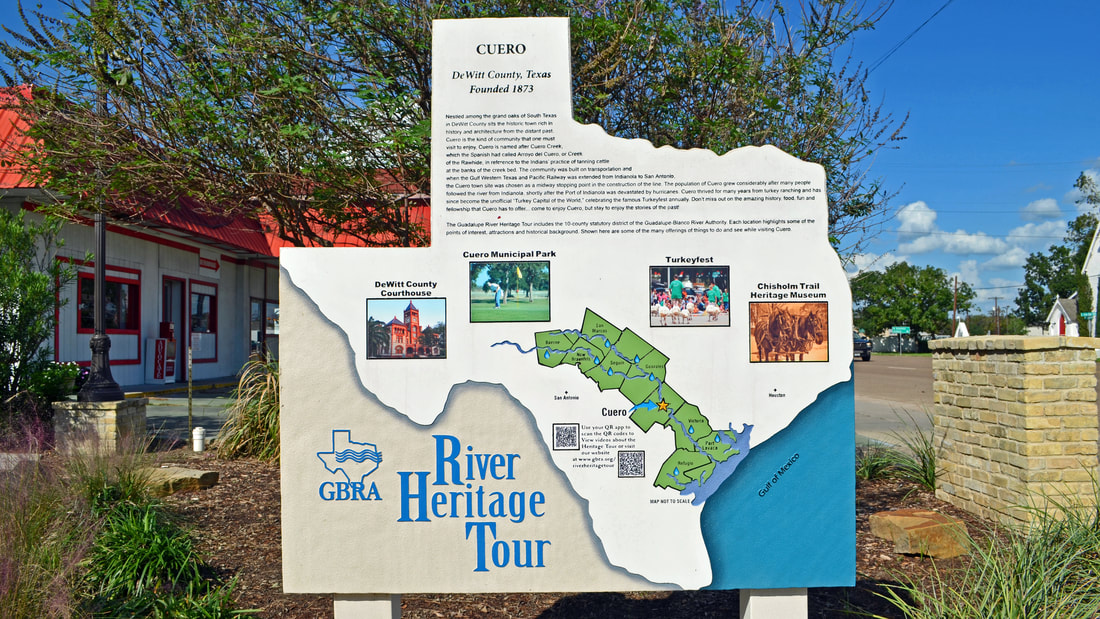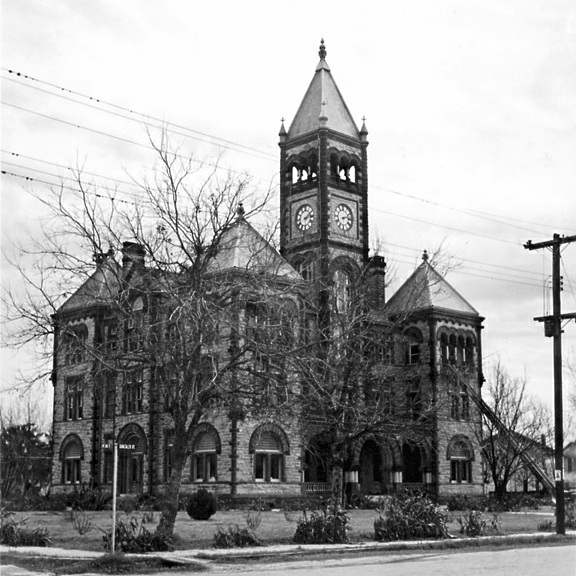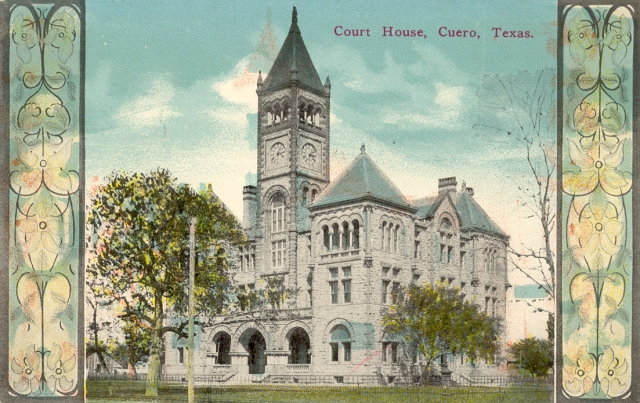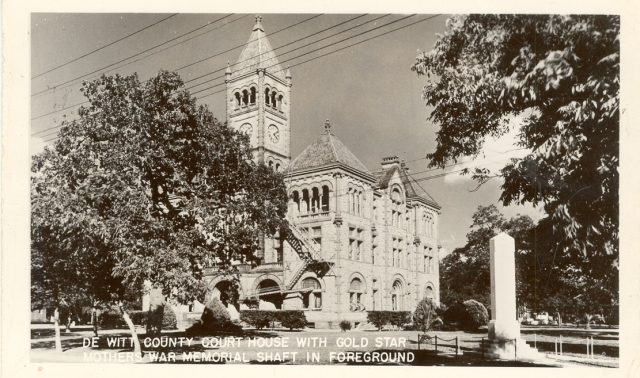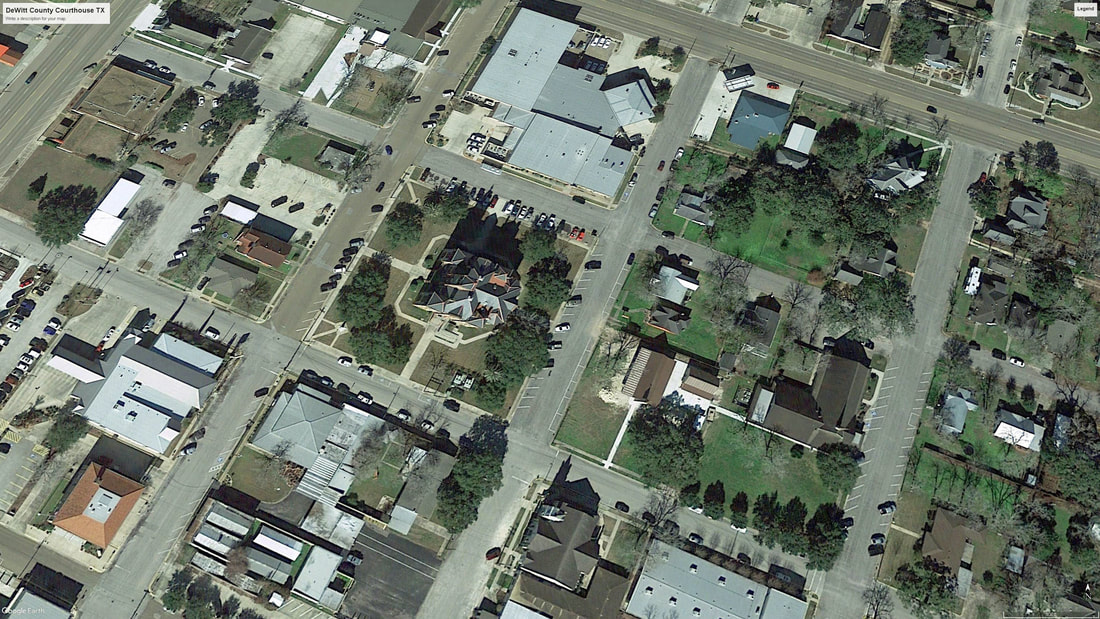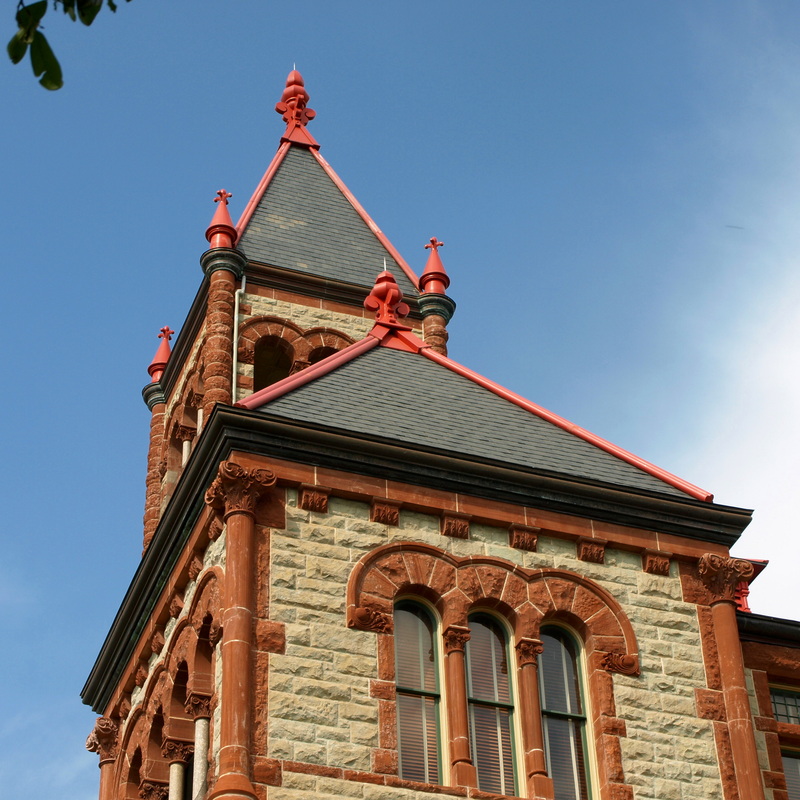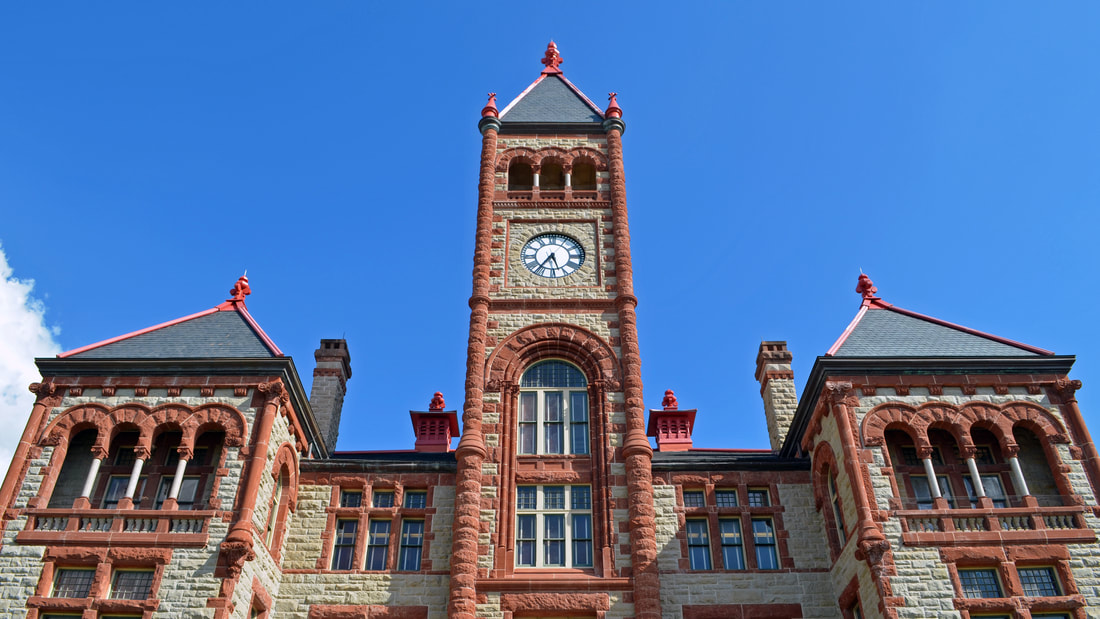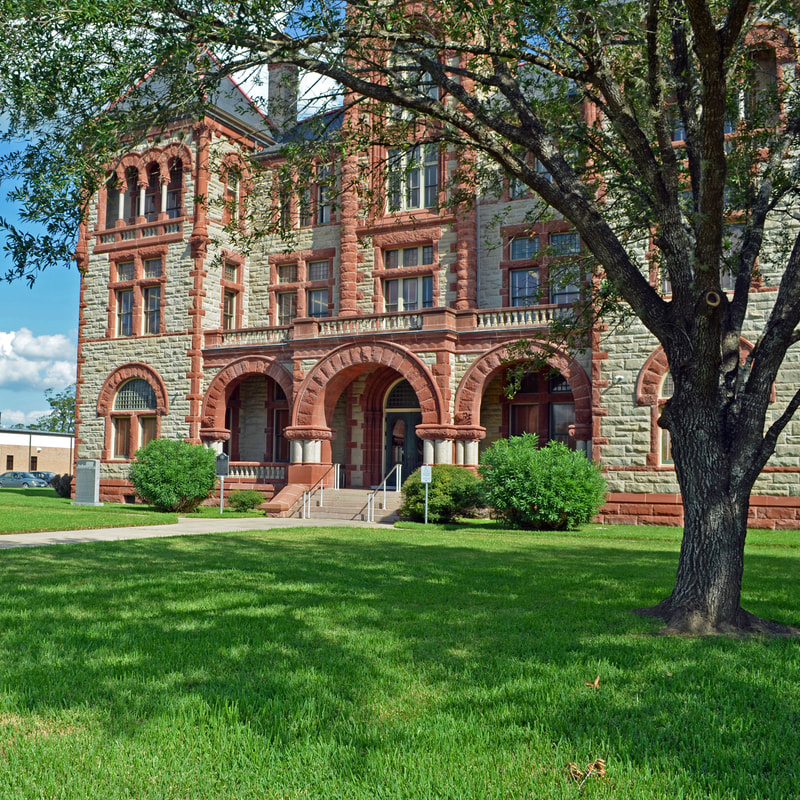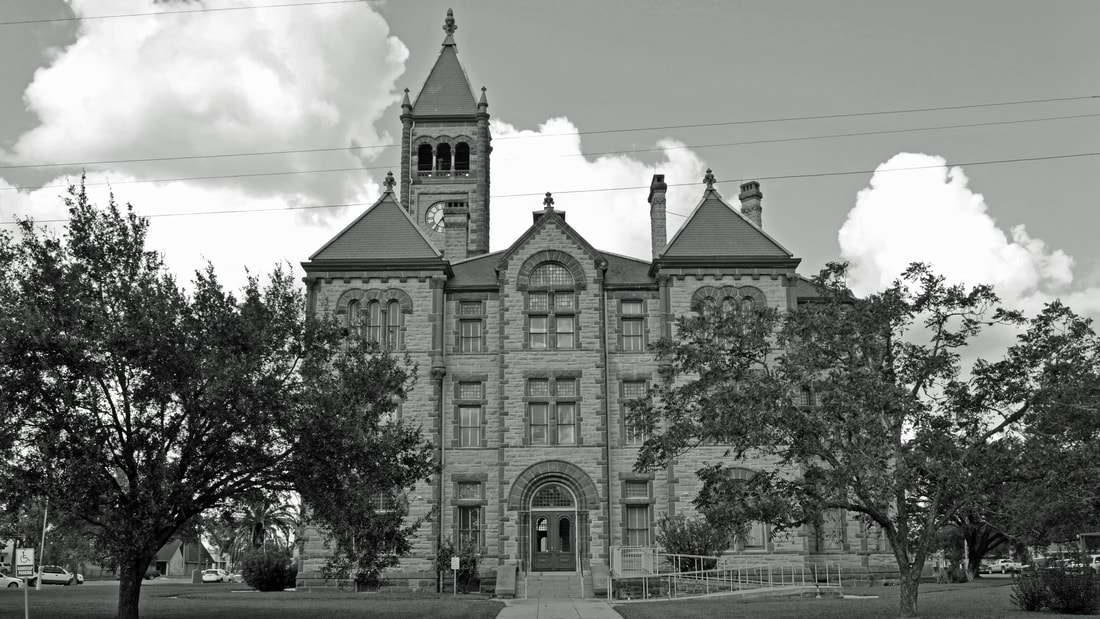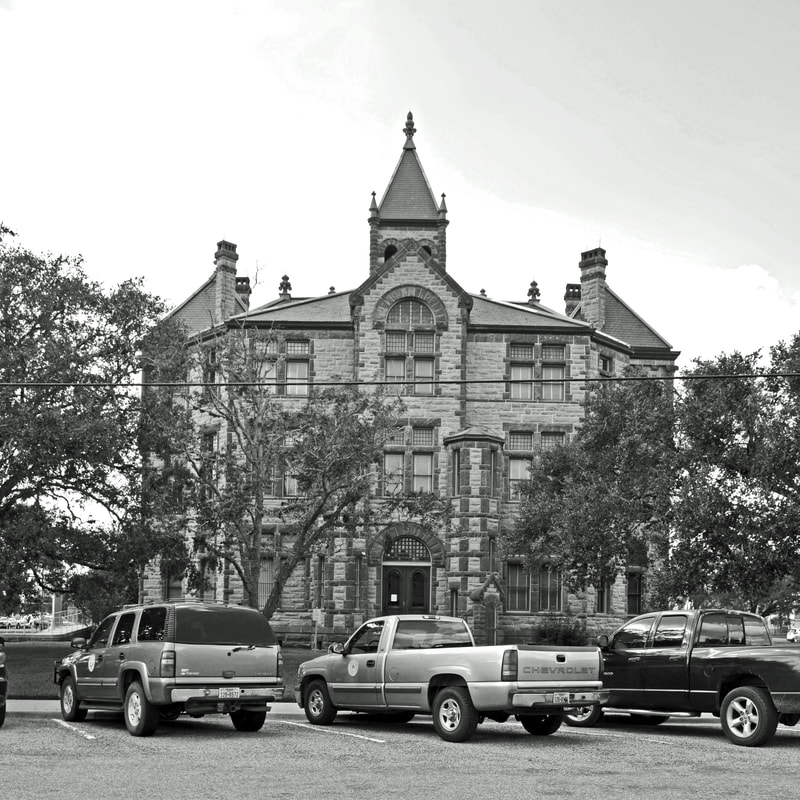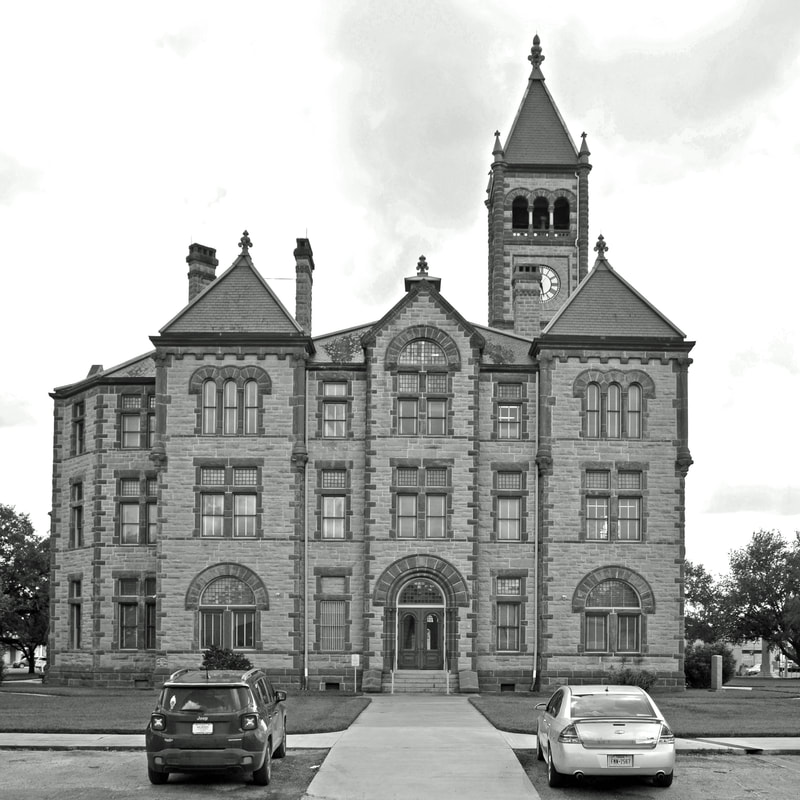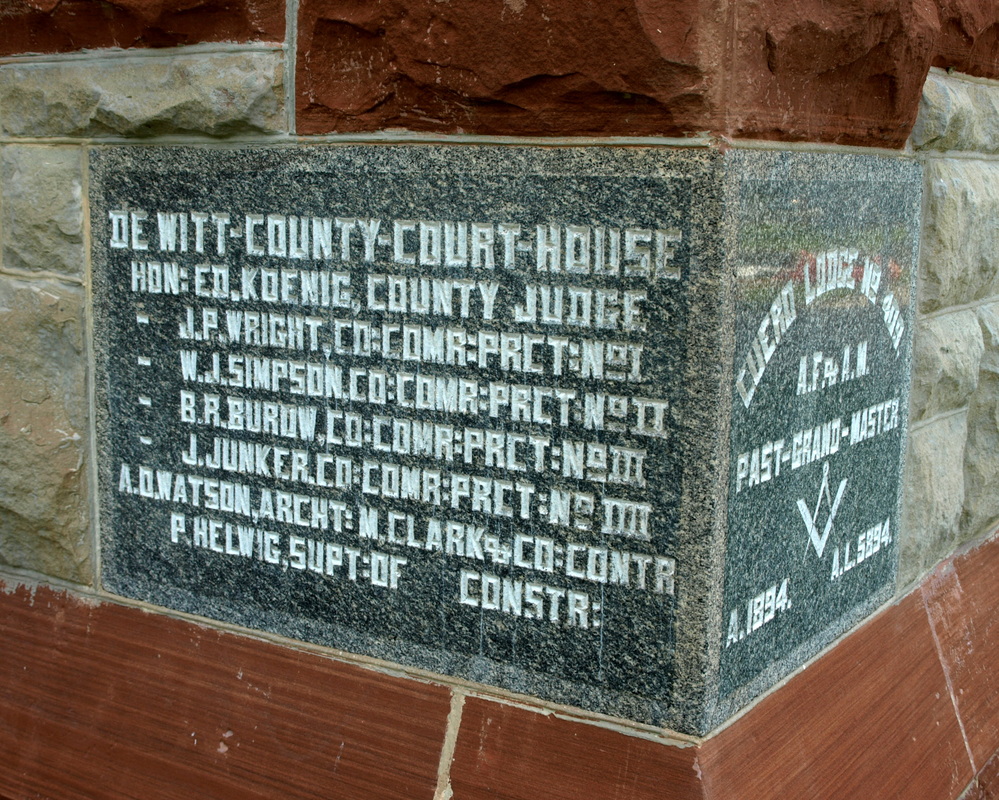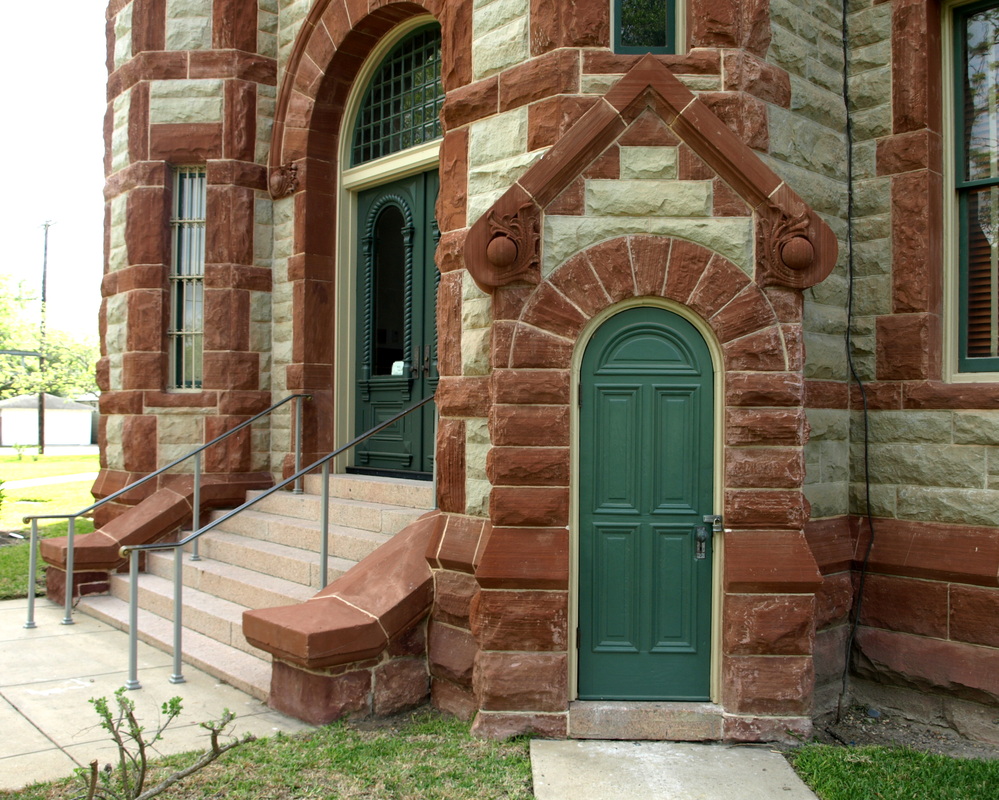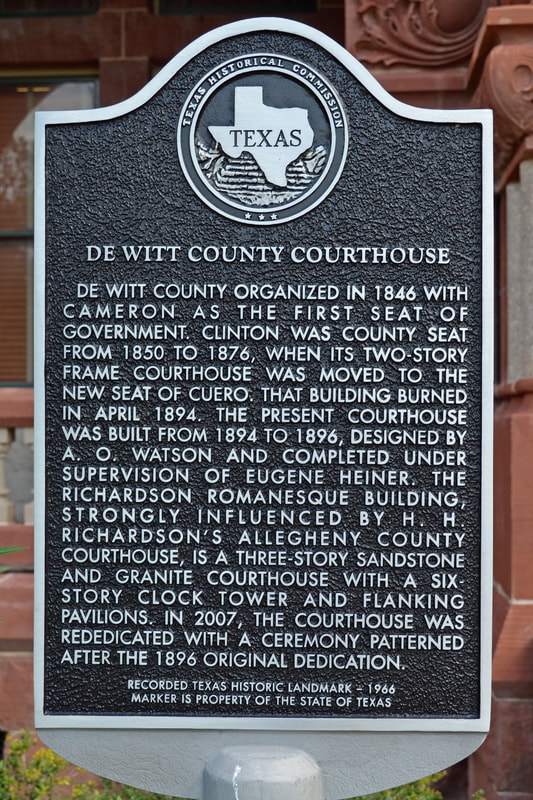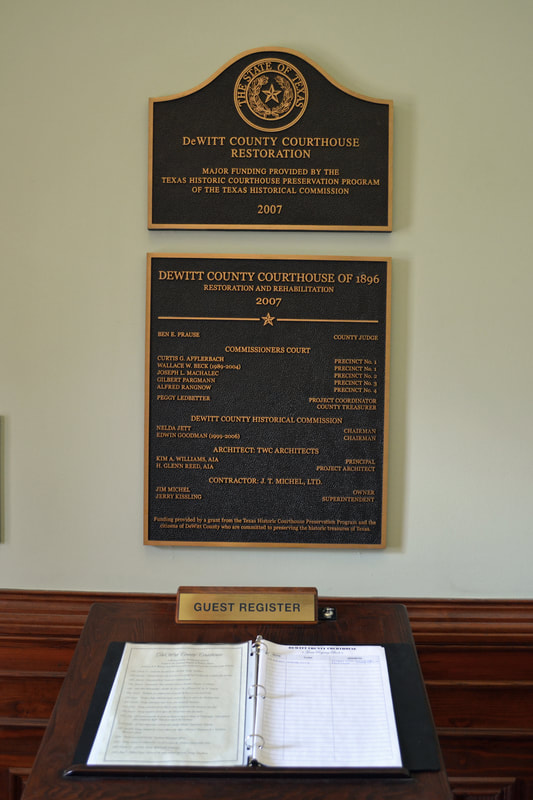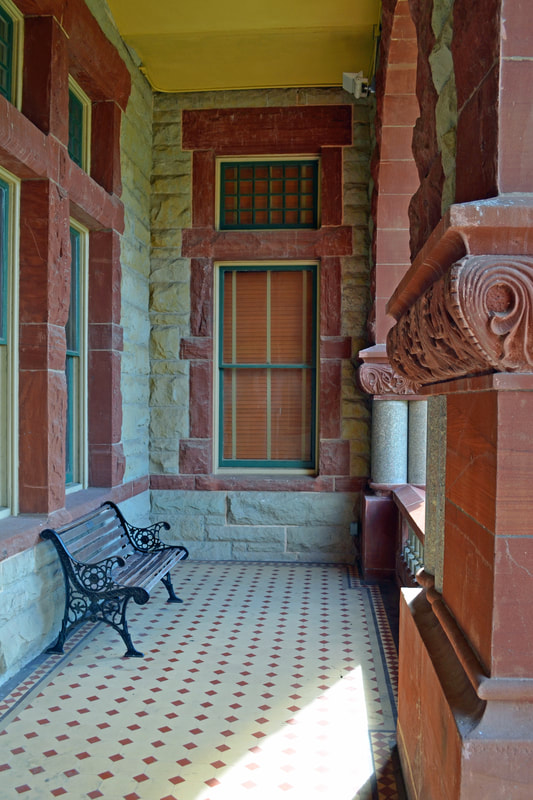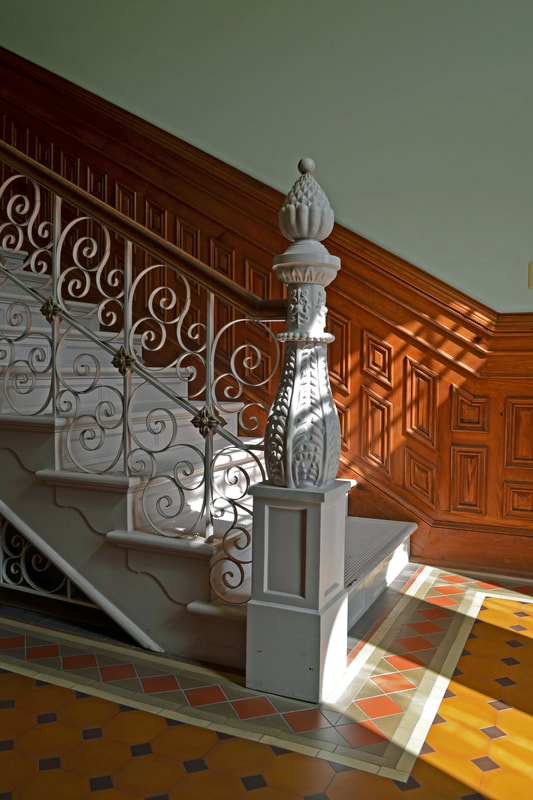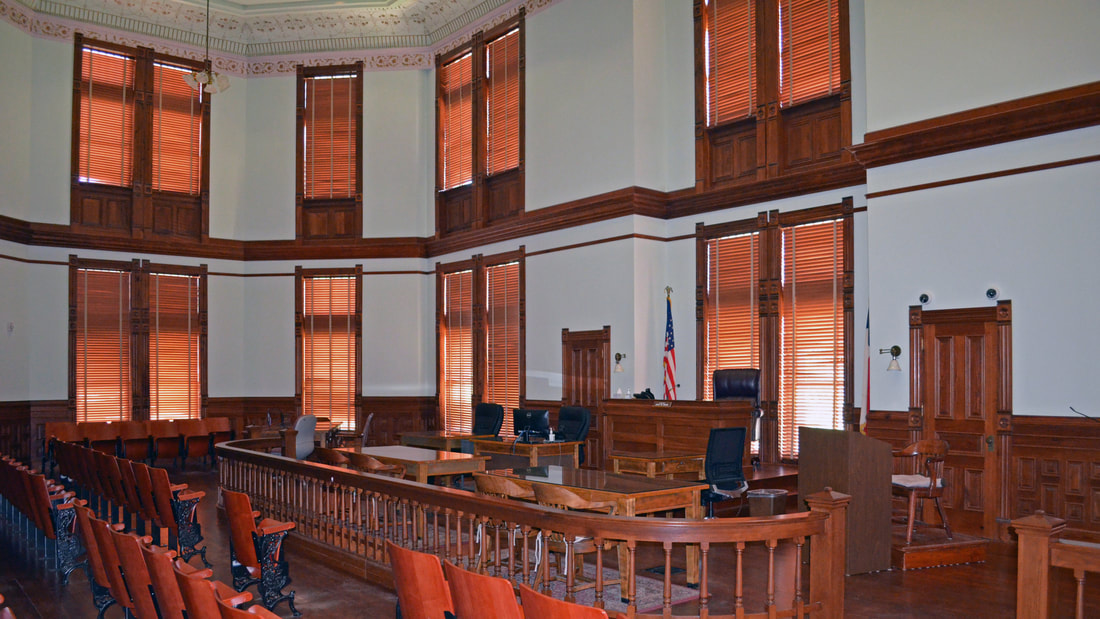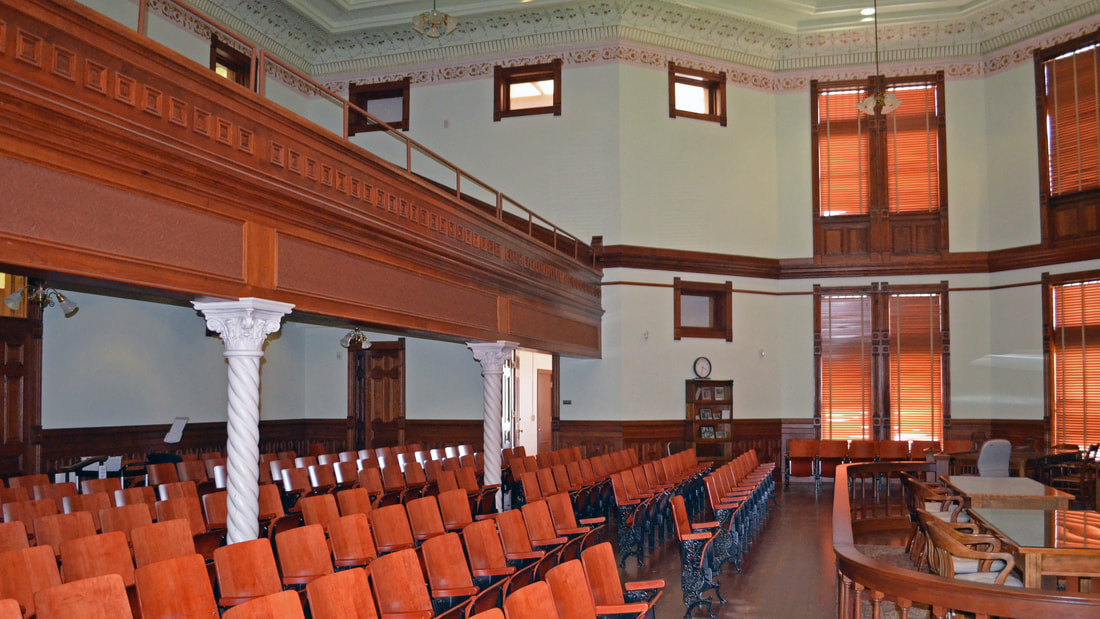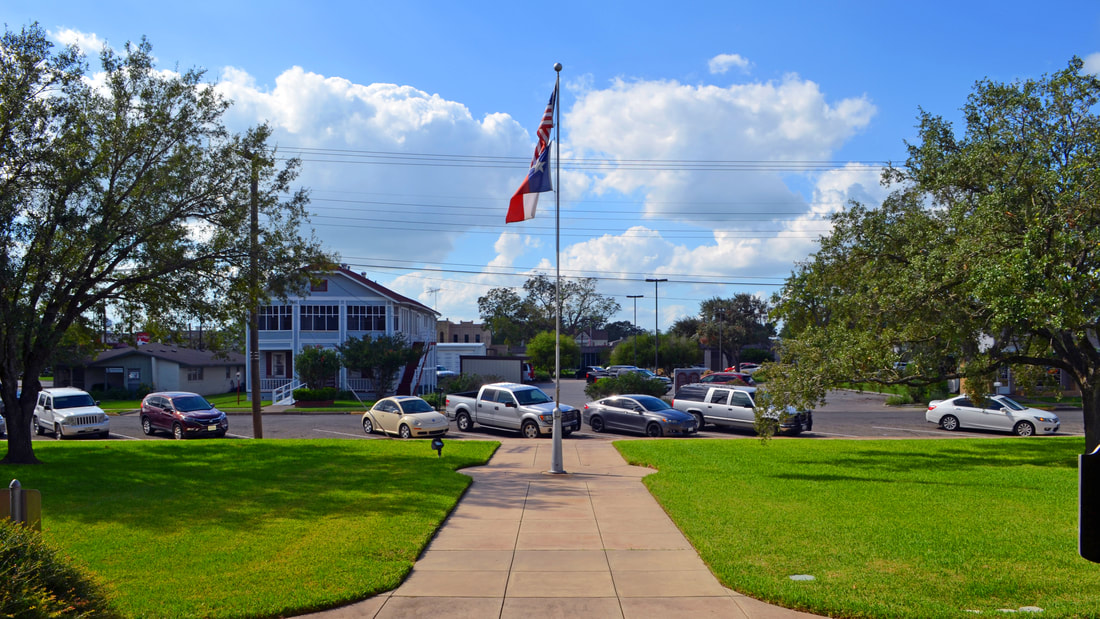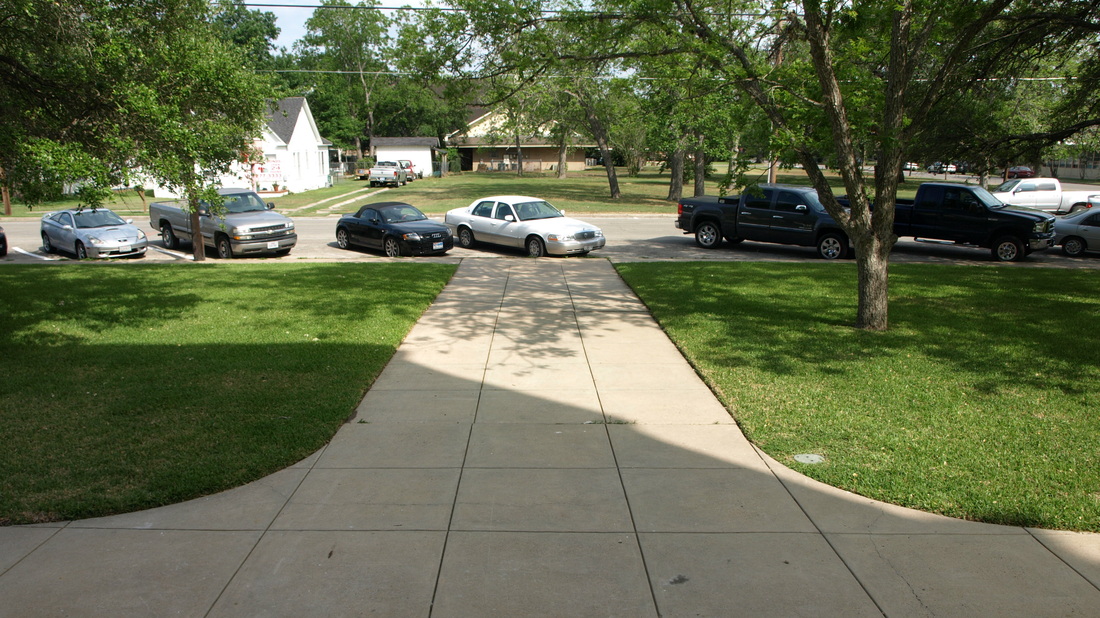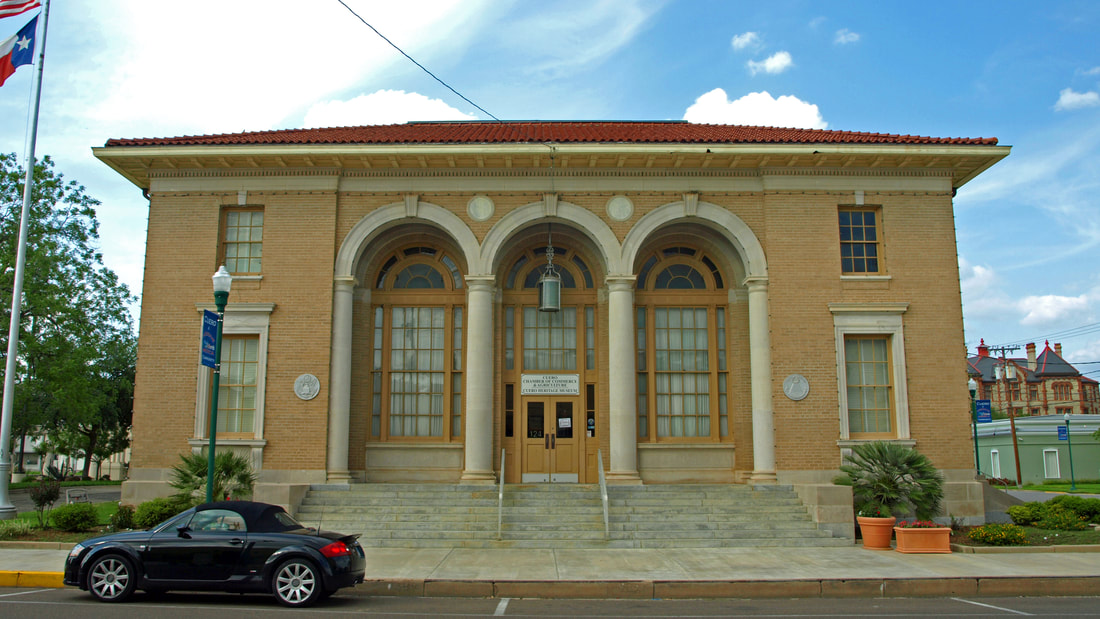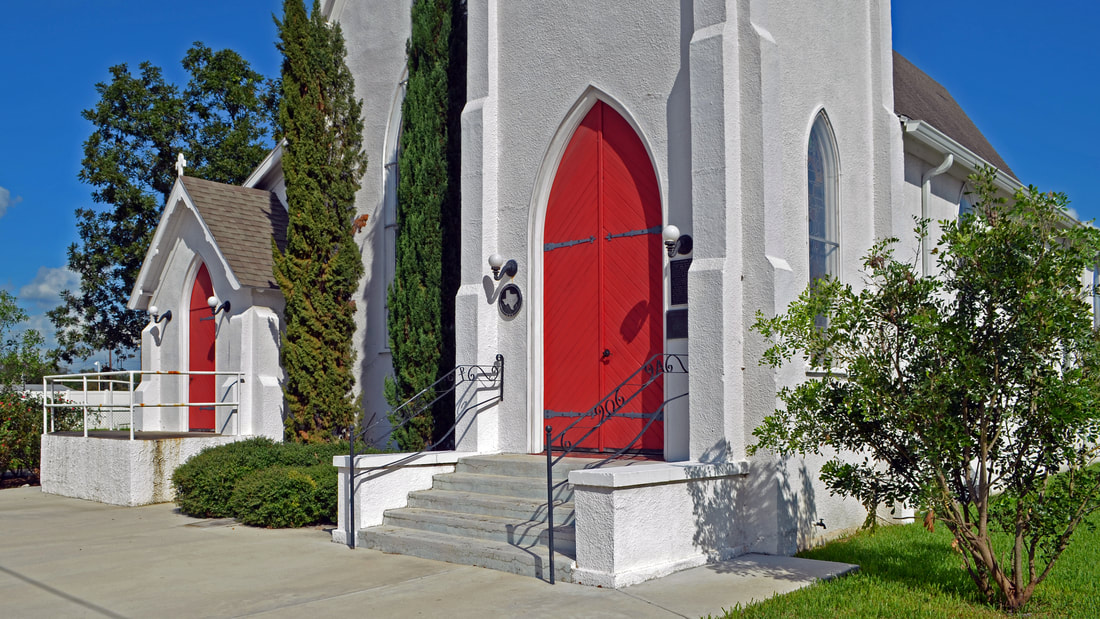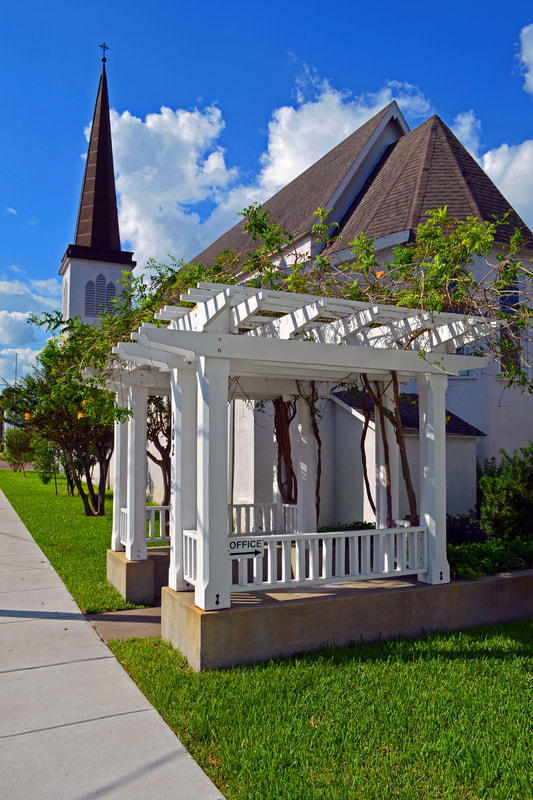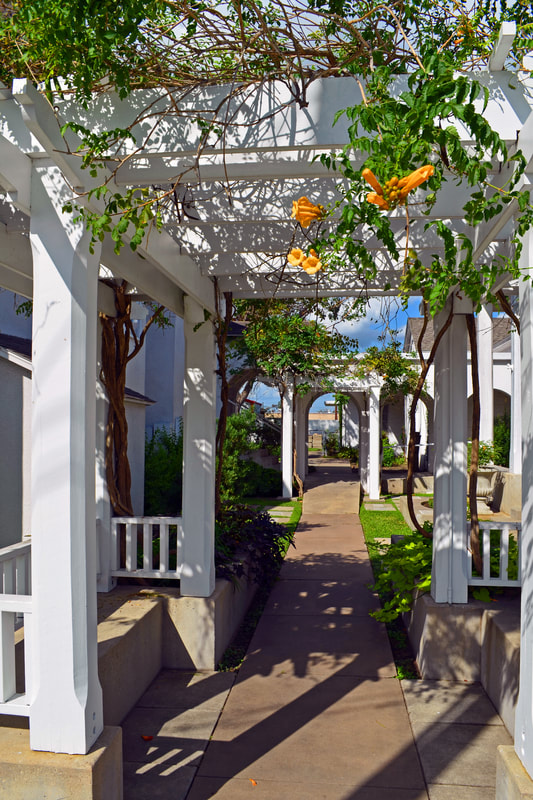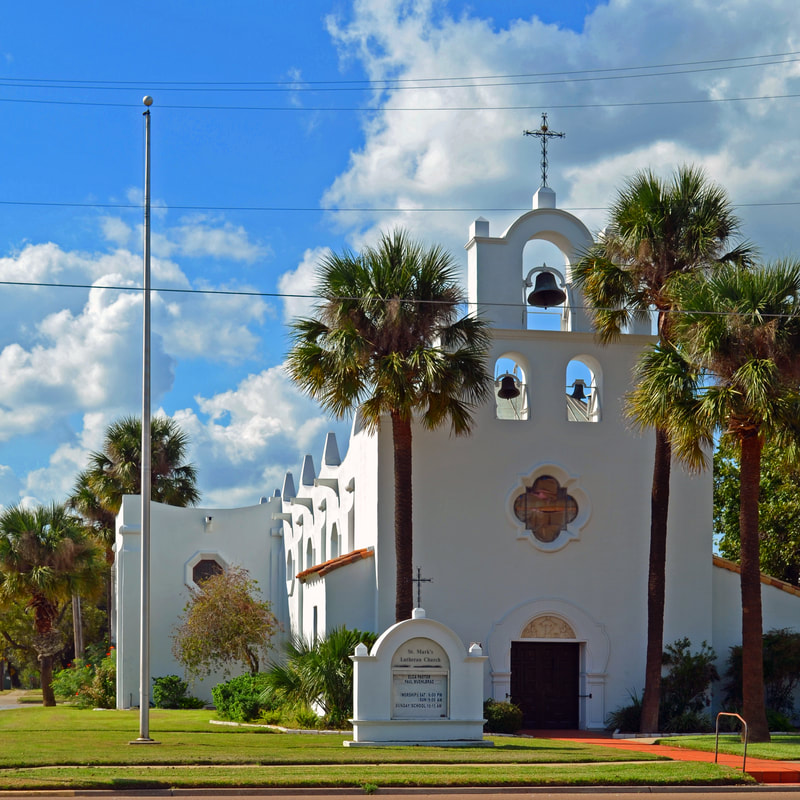099 of 254: DeWitt County Courthouse, Cuero, Texas. County Population: 20,097
|
"DeWitt County is on the Gulf Coast Plain in southeastern Texas. It comprises 910 square miles, most of which is nearly level to sloping; the areas of greatest elevation are mostly in the northwest. The elevation ranges from about 150 feet above sea level in the east corner to more than 540 feet above sea level in the southwest.
"Although the present county was part of DeWitt's colony and settlement dates to colonization in 1825, the county officially has two dates of origin. The first, DeWitt County (Judicial), was formed on February 2, 1842, but was declared unconstitutional along with other judicial counties later that autumn. The present DeWitt County was formed from Goliad, Gonzales, and Victoria counties in 1846 and named for empresario Green DeWitt. "In 1846–47 the county seat was Daniel Boone Friar's store at the junction of the La Bahía Road and the Gonzales-Victoria road. "The first post office was established at Friar's store in 1846 and named Cuero; ... "A courthouse was constructed at Cameron, but in the next four years the county had four new seats of government, each change being the result of an election, a recount of votes, an appeal, or a Supreme Court decision. On November 28, 1850, the county court met at Clinton near Chisholm's Ferry, and Clinton remained the center of county government until Cuero became county seat in 1876." Craig H. Roell, "DEWITT COUNTY," Handbook of Texas Online |
I visited DeWitt County and photographed the courthouse in Cuero on April 13, 2011 and October 5, 2017.
DeWitt County Courthouse 1896"The building [style] is Richardsonian Romanesque and the architect, A.O Watson, was strongly influenced by the Allegheny County Courthouse in Pittsburgh, Pennsylvania. The plan is central and basically square with four corner pavilions. The roof is hipped and the main tower and the pavilions have pyramidal roofs.
"The main facade consists of a recessed triple bay section between flanking pavilions. The pavilions are united by a connecting arcaded one-story porch very similar to that of the Pittsburgh building. The tower rises behind the central bay, and is also in the style of Richardson's building." From the National Register narrative "The 1896 DeWitt County Courthouse was designed in the Romanesque Revival style by noted architect Arthur O. Watson and completed under the supervision of Eugene T. Heiner. By the 21st century, its original slate roof had been replaced with one of Spanish tile. The 1950's interior alterations included original rich, Victorian details that had been mercilessly stripped or covered in turquoise tile, dropped ceilings and a new floor level had been inserted into the district courtroom. The district courtroom was reopened to its historic two-story height and its balcony was replicated. The building's long-missing iron stairs, with their decorative railings were replicated as well, along with the elaborate woodwork lining the hallways and courtrooms. The courthouse was rededicated in October 2007." From the THC website |
